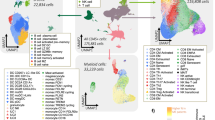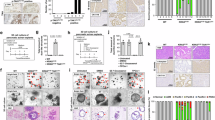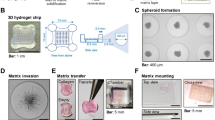Abstract
T-cell death-associated gene 51 (TDAG51) has been described to regulate T-cell receptor/CD3-dependent induction of CD95/Fas and subsequent activation-induced cell death (AICD) in a murine T-cell hybridoma. Using well-defined pharmacological inhibitors, we investigated the regulation of TDAG51 expression in human T-cells and the correlation with cell death. TDAG51 was induced in resting T-cells, lymphoid cell lines and AICD-susceptible as well as AICD-resistant T-cell clones, and induction was inhibited by MAP-kinase inhibitors and PKC inhibitor Gö6983. No correlation between the effects of inhibitors on TDAG51 expression and cell death was observed. The constitutive TDAG51 expression in five pancreatic carcinoma cell lines was reduced by MAP-kinase inhibitors but not by Gö6983. Furthermore, the inducible overexpression of TDAG51 in TetOn Jurkat cells did not modulate cellular proliferation, phorbolester/ionomycin-induced growth arrest, or the expression of various cell surface molecules. Our results indicate that the expression of TDAG51 in human T-cells does not correlate with AICD.
Similar content being viewed by others
Log in or create a free account to read this content
Gain free access to this article, as well as selected content from this journal and more on nature.com
or
Abbreviations
- AICD:
-
activation-induced cell death
- Doxy:
-
doxycycline
- FasL:
-
Fas-ligand
- MAP kinase:
-
mitogen-activated protein kinase
- mAb:
-
monoclonal antibody
- PKC:
-
protein kinase C
- TCR:
-
T-cell receptor
- TDAG51:
-
T-cell death-associated gene 51
References
Kabelitz D, Pohl T and Pechhold K (1993) Activation-induced cell death (apoptosis) of mature peripheral T lymphocytes. Immunol. Today 14: 338–339
Dhein J, Walczak H, Baeumler C, Debatin KM and Krammer PH (1995) Autocrine T-cell suicide mediated by APO-1/(Fas/CD95). Nature 373: 438–441
Brunner T, Mogil RJ, LaFace D, Yoo NJ, Mahboubi A, Echeverri F, Martin SJ, Force WR, Lynch DH, Ware CF and Green DR (1995) Cell-autonomous Fas (CD95)/Fas-ligand interaction mediates activation-induced apoptosis in T-cell hybridomas. Nature 373: 441–444
Ju ST, Panka DJ, Cui H, Ettinger R, el-Khatib M, Sherr DH, Stanger BZ and Marshak-Rothstein A (1995) Fas(CD95)/FasL interactions required for programmed cell death after T-cell activation. Nature 373: 444–448
Wesselborg S, Janssen O and Kabelitz D (1993) Induction of activation-driven death (apoptosis) in activated but not resting peripheral blood T cells. J. Immunol. 150: 4338–4345
Kirchhoff S, Muller WW, Krueger A, Schmitz I and Krammer PH (2000) TCR-mediated up-regulation of c-FLIPshort correlates with resistance toward CD95-mediated apoptosis by blocking death-inducing signaling complex activity. J. Immunol. 165: 6293–6300
Kirchhoff S, Muller WW, Li-Weber M and Krammer PH (2000) Up-regulation of c-FLIPshort and reduction of activation-induced cell death in CD28-costimulated human T cells. Eur. J. Immunol. 30: 2765–2774
Lens SM, Kataoka T, Fortner KA, Tinel A, Ferrero I, MacDonald RH, Hahne M, Beermann F, Attinger A, Orbea HA, Budd RC and Tschopp J (2002) The caspase 8 inhibitor c-FLIPL modulates T-cell receptor-induced proliferation but not activation-induced cell death of lymphocytes. Mol. Cell. Biol. 22: 5419–5433
Thome M and Tschopp J (2001) Regulation of lymphocyte proliferation and death by FLIP. Nat. Rev. Immunol. 1: 50–58
Schmitz I, Krueger A, Baumann S, Schulze-Bergkamen H, Krammer PH and Kirchhoff S (2003) An IL-2-dependent switch between CD95 signaling pathways sensitizes primary human T cells toward CD95-mediated activation-induced cell death. J. Immunol. 171: 2930–2936
Peter ME and Krammer PH (2003) The CD95(APO-1/Fas) DISC and beyond. Cell Death Differ 10: 26–35
Park CG, Lee SY, Kandala G, Lee SY and Choi Y (1996) A novel gene product that couples TCR signaling to Fas(CD95) expression in activation-induced cell death. Immunity 4: 583–591
Rho J, Gong S, Kim N and Choi Y (2001) TDAG51 is not essential for Fas/CD95 regulation and apoptosis in vivo. Mol. Cell. Biol. 21: 8365–8370
Gomes I, Xiong W, Miki T and Rosner MR (1999) A proline- and glutamine-rich protein promotes apoptosis in neuronal cells. J. Neurochem. 73: 612–622
Neef R, Kuske MA, Pröls E and Johnson JP (2002) Identification of the human PHLDA1/TDAG51 gene: down-regulation in metastatic melanoma contributes to apoptosis resistance and growth deregulation. Cancer Res. 62: 5920–5929
Wang R, Zhang L, Yin D, Mufson RA and Shi Y (1998) Protein kinase C regulates Fas (CD95/Apo-1) expression. J. Immunol. 161: 2201–2207
Oberg HH, Lengl-Janßen B, Kabelitz D and Janssen O (1997) Activation-induced T cell death: resistance or susceptibility correlate with cell surface Fas ligand expression and T helper phenotype. Cell. Immunol. 181: 93–100
Qian N, Frank D, O’Keefe D, Dao D, Zhao L, Yuan L, Wang Q, Keating M, Walsh C and Tycko B (1997) The IPL gene on chromosome 11p15.5 is imprinted in humans and mice and is similar to TDAG51, implicated in Fas expression and apoptosis. Hum. Mol. Genet. 6: 2021–2029
Hu RJ, Maxwell PL, Connors TD, Johnson LA, Burn TC, Su K, Landes GM and Feinberg AP (1997) A 2.5-Mb transcript map of a tumor-suppressing subchromosomal transferable fragment from 11p15.5, and isolation and sequence analysis of three novel genes. Genomics 46: 9–17
Lee MP and Feinberg AP (1998) Genomic imprinting of a human apoptosis homologue, TSSC3. Cancer Res. 58: 1052–1056
Frank D, Mendelsohn CL, Ciccone E, Svensson K, Ohlsson R and Tycko BA (1999) A novel pleckstrin homology-related gene family defined by Ipl/Tssc3, TDAG51, and Tih1: tissue-specific expression, chromosomal location, and parental imprinting. Mamm. Genome 10: 1150–1159
Hossain GS, van Thienen JV, Werstuck GH, Zhou J, Sood SK, Dickhout JG, de Koning ABL, Tang D, Wu D, Falk E, Poddar R, Jacobsen DW, Zhang K, Kaufman RJ and Austin RC (2003) TDAG51 is induced by homocysteine, promotes detachment-mediated programmed cell death, and contributes to the development of atherosclerosis in hyperhomocysteinemia. J. Biol. Chem. 278: 30317–30327
Hinz T, Flindt S, Marx A, Janssen O and Kabelitz D (2001) Inhibition of protein synthesis by the T cell receptor-inducible human TDAG51 gene product. Cell. Signal. 13: 345–352
Ungefroren H, Voss M, Jansen M, Roeder C, Henne-Bruns D, Kremer B and Kalthoff H (1998) Human pancreatic adenocarcinomas express Fas and Fas Ligand yet are resistant to Fas-mediated apoptosis. Cancer Res. 58: 1741–1749
Favata MF, Horiuchi KY, Manos EL, Daulerio AJ, Stradley DA, Feeser WS, van Dyk DE, Pitts WJ, Earl RA, Hobbs F, Copeland RA, Magolda RL, Scherle PA and Trzaskos JM (1998) Identification of a novel inhibitor of mitogen-activated protein kinase kinase. J. Biol. Chem. 273: 18623–18632
Dudley DT, Pang L, Decker SJ, Bridges AJ and Saltiel AR (1995) A synthetic inhibitor of the mitogen-activated protein kinase cascade. Proc. Natl. Acad. Sci. USA 92: 7686–7689
Davies SP, Reddy H, Caivano M and Cohen P (2000) Specificity and mechanism of action of some commonly used protein kinase inhibitors. Biochem. J. 351: 95–105
Stempka L, Girod A, Müller HJ, Rincke G, Marks F, Gschwendt M and Bossemeyer D (1997) Phosphorylation of protein kinase C (PKC) at threonine 505 is not a prerequisite for enzymatic activity. Expression of rat PKC and an alanine 505 mutant in bacteria in a functional form. J. Biol. Chem. 272: 6805–6811
Uehara Y, Fukazawa H, Murakami Y and Mizuno S (1989) Irreversible inhibition of v-src tyrosine kinase activity by herbimycin A and its abrogationby sulfhydryl compounds. Biochem. Biophys. Res. Commun. 163: 803–809
Powis G, Bonjouklian MM, Berggren A, Gallegos R, Abraham C, Ashendel A, Zalkow W, Matter WF, Dodge J, Gridey G and Vlahos CJ (1994) Wortmannin, a potent and selective inhibitor of phosphatidylinositol-3-kinase. Cancer Res. 54: 2419–2423
Sawada S, Suzuki G, Kawase Y and Takaku F (1987) Novel immunosuppressive agent, FK506. In vitro effects on the cloned T cell activation. J. Immunol. 139: 1797–1803
Acknowledgements
We gratefully acknowledge Professor Judith Johnson for her generous gift of PHLDA1 monoclonal antibody and Dr. Thomas Hinz for providing the pRevTDAG vector. We thank Maria Niggemeier for expert technical assistance. This work was supported by a grant from the Deutsche Forschungsgemeinschaft (SFB 415 A14 to Dieter Kabelitz).
Author information
Authors and Affiliations
Corresponding author
Additional information
Edited by Dr B Osborne
Rights and permissions
About this article
Cite this article
Oberg, HH., Sipos, B., Kalthoff, H. et al. Regulation of T-cell death-associated gene 51 (TDAG51) expression in human T-cells. Cell Death Differ 11, 674–684 (2004). https://doi.org/10.1038/sj.cdd.4401407
Received:
Revised:
Accepted:
Published:
Issue date:
DOI: https://doi.org/10.1038/sj.cdd.4401407
Keywords
This article is cited by
-
Pro-death signaling of cytoprotective heat shock factor 1: upregulation of NOXA leading to apoptosis in heat-sensitive cells
Cell Death & Differentiation (2020)
-
TDAG51 deficiency promotes oxidative stress-induced apoptosis through the generation of reactive oxygen species in mouse embryonic fibroblasts
Experimental & Molecular Medicine (2013)
-
Expression of PAR-4 and PHLDA1 is prognostic for overall and disease-free survival in oral squamous cell carcinomas
Virchows Archiv (2013)
-
Thioredoxin-interacting protein (txnip) is a glucocorticoid-regulated primary response gene involved in mediating glucocorticoid-induced apoptosis
Oncogene (2006)
-
PARP-2 deficiency affects the survival of CD4+CD8+ double-positive thymocytes
The EMBO Journal (2006)



